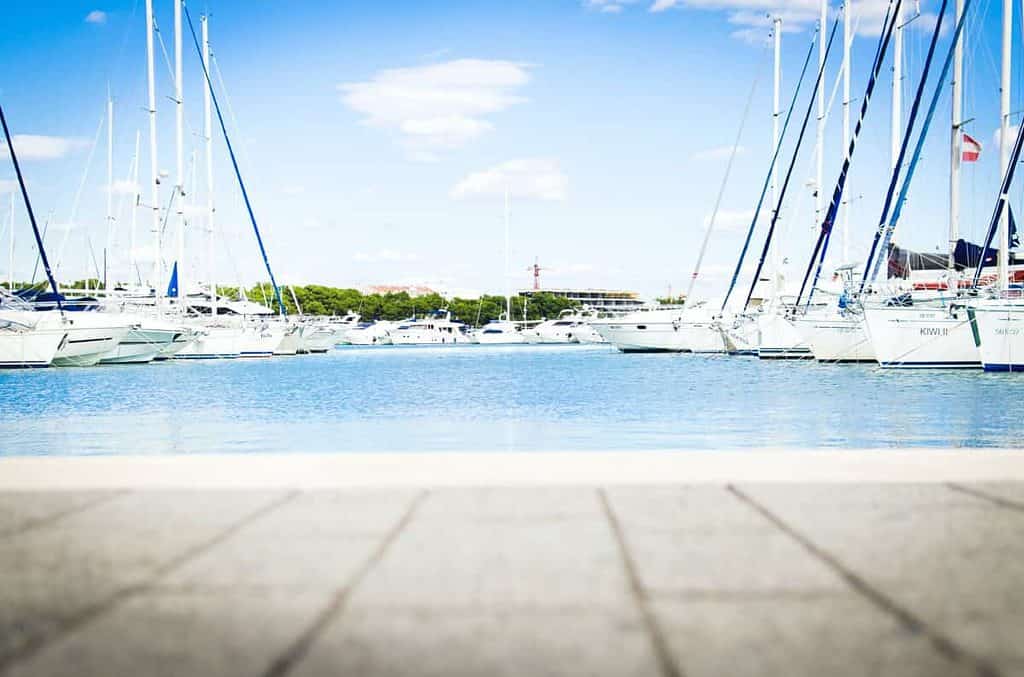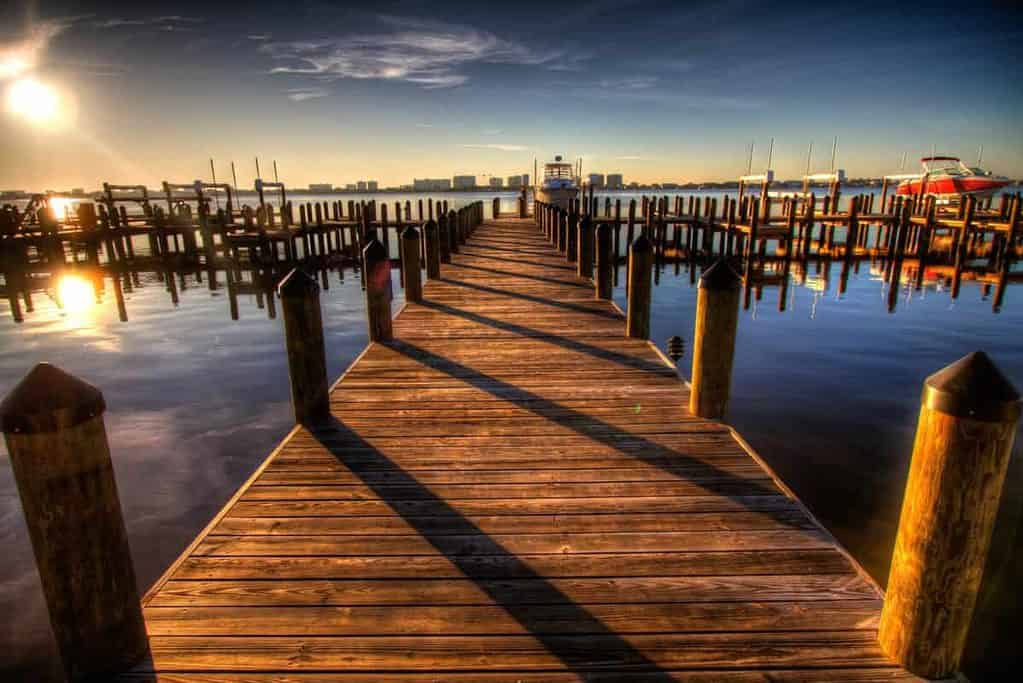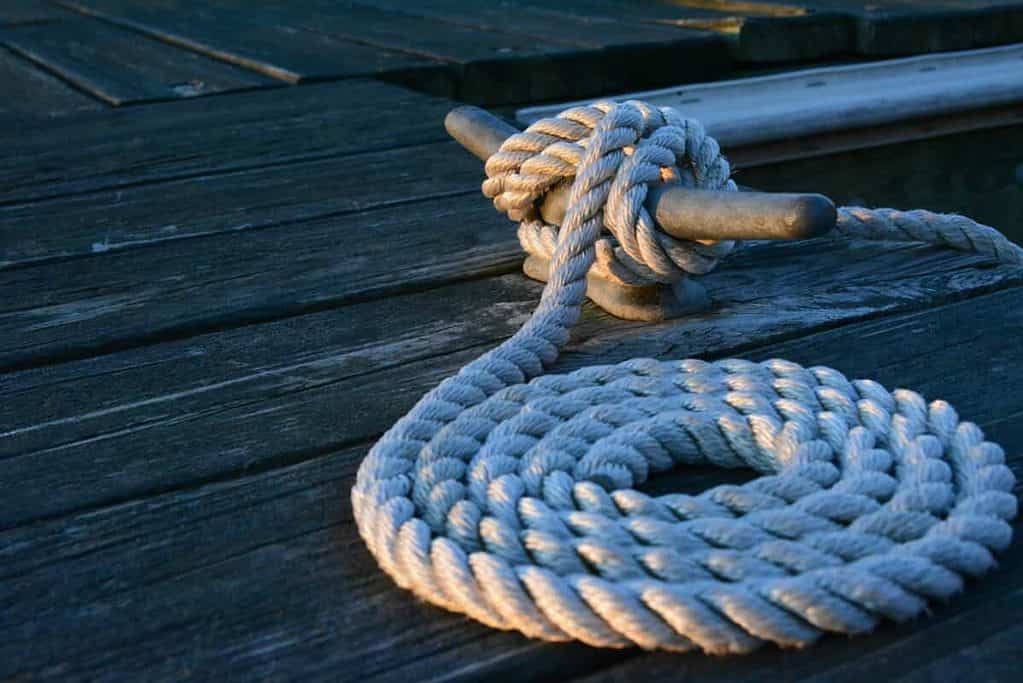
Having a great day out on the water is one of the best feelings out there… but then comes the intimidating and perceived stressful task of docking, especially for those new to boating. But, wait, learning how to dock a boat doesn’t have to be difficult, and any boater can quickly master the task by following a few simple steps, helping melt the stress while docking.
How to Dock a Boat
- Prepare the dock lines on your bow and stern and attach fenders.
- Line up your approach and survey the docking area, stay calm.
- Judge the current, wind, and water conditions, if needed let the boat drift a bit to get the feel.
- Take your time, proceed slowly towards the dock using intermittent acceleration, nice and slow.
- Approach slowly, never move towards a dock any faster than you’re willing to hit it.
- Navigate into the boat slip or turn to approach parallel alongside the dock.
- Tie off your boat onto cleats, posts, or pilings using your docking lines.
As a whole, the biggest key is to STAY CALM and APPROACH SLOW. Don’t let the wind, current, tight squeeze, other boaters, and on-lookers stress you out. Practice does make things easier along with having a friend or family member on board or on the dock to help assist you throughout the process. When you are near the docks take a moment to stop, survey the area and place your fenders in place ahead of time, and have your docking lines ready to tie off as soon as you’re in close proximity to the dock.
If you are feeling uncomfortable or docking by yourself, remember to take it slow and don’t be afraid to stop, pull back, and circle around to try again. The following tips will make your next docking experience a bit easier.

1. Relax
Relax, Breath you are confident you can do it. You never want to let yourself and or your passengers. Panicking doesn’t help anyone, so don’t scream at your family, or friends, just communicate calmly and effectively asking passengers to stay seated unless given a task. Communication is vital, but by shouting, all that it does is make the moment more stressful
2. Bring down your throttle, Approach slowly
Be gentle with your throttle: stop a distance away from the docks, prepare your fenders and dock lines, survey the area, and approach, slowly at idle speed. What is Idle Speed? Most boats have an idle speed of 5 mph. With the throttle clicked just forward of neutral, it is called “idling in gear” — so that the engine is turning at around 600 rpm, and at about 5 mph.
3. Prep your fenders and dock lines
Always have fenders and lines secured before getting close to the dock. Boat fenders, often referred to as “boat bumpers”, provide a cushion between your boat and a dock, a must-have, fenders can help protect your boat in case of an unexpected motion due to wind or current. Place your fenders, by spacing them equally minimum of 2 or more along the widest part of the hull, since that will most likely touch the dock first. Your boat fenders should be hovering right above the waterline. As a general rule, you’ll want two or three fenders, a bow line, a stern line, and at least one spring line.
4. Toss the Spring line first – What is a Spring Line?
A spring line is a line stretched longways between a docked vessel and a cleat on the pier, or used during docking to guide the boat into its slip. As a general rule, the length of bow and stern lines should equal half of your boat’s overall length. Spring lines should be slightly longer, approximately two-thirds the length of your boat. The spring line helps prevent your boat’s forward or backward movement and reduces banging against the dock. In addition, if wind or current pushes you off the pier, you can use this spring line to pull yourself closer.
What is a bowline?
A bowline is tied to your boat’s front (ake bow). It can be used in the case of a tow or as a line to secure your boat to the dock. As a general rule, the length of bow and stern lines should equal half of your boat’s overall length whereas Spring lines should be slightly longer, approximately two-thirds the length of your boat.
5. Use your spring line
Many times, if you are dock at a marina or restaurant, a dock hand is there to assist. Toss or if you are close enough hand them the spring line, a dockhand should wrap the spring line on a cleat as a pivot point, that is either forward or further back of the boat on the dock, and help guide you closer. A spring line should not be tied down but rather secured so that it can be quickly moved if needed.
6. Reversing into the dock
Provide a forward spring line to a person on the dock, once secured, Turn the wheel hard to face the engine towards the dock, and place the engine gently in reverse. In the case of a boat with twin engines, use the starboard engine only to back down and cut the wheel hard to port; you’ll begin to see your vessel inch closely into the dock.
7. Secure the bow and stern line
Once you’ve gotten close enough, have a family member or friend onboard hand the bowline to someone on the dock, preferably a dockhand.
Make sure that the bowlines and stern lines are securely attached to the cleat, preferable using a cleat hitch knot.
What is a Cleat Hitch knot?
The Cleat Hitch knot is the best way to tie a boat to a dock. It is a quick and easy method of tying a rope to a cleat on a dock or boat that is also easy to untie.
Next, use your stern line and attach it securely to the dock using a cleat hitch knot. Now you are ready for everyone to disembark. Once everyone is off the boat, look at the lines and make any adjustments as necessary, rescuer prior to leaving the boat at the dock.
Additional Safety Tips:
- Strong winds and currents may require a slight adjustment to this post’s tips.
- Fenders exist for a reason, so don’t be afraid to use an extra fender.
- Many newer boats come with bow or stern thrusters. These can be helpful, but you’ll want to refrain from using a thruster for more than 2 seconds at a time or you will run the risk of burning it out.

How to Dock in to a Slip?
As a boater, you will encounter many situations where docking in a slip is a common scenario, you will often find yourself docking in your own personal slip, a friend’s slip, or at a public marina or dockside restaurant. Before you begin, relax, slow down, and get your docking lines and fenders ready ahead of time on both sides of your boat. As in any and all docking situations, you’ll then want to start by checking your surroundings, looking out for other nearby boats, and be aware of the conditions of the wind, tide, and current.
Be gentle with your throttle, with the throttle clicked just forward of neutral, it is called “idling in gear”, always maneuver at a slow speed. Within a slip, you have limited mobility, so slow gives you a chance to correct. In most cases, you’ll want to position your boat so you’re able to back into the slip. Before you start backing in, you’ll want to center your wheel.
Slowly reverse your boat into the slip. Keep your passengers seated during the process. This is not only for their safety, but it can help to keep the boat steady as it moves into the slip. As you are almost in all the way, Apply one last small burst of power forward to stop your reverse momentum. Then, tie off your lines to the dock. We suggest having two bow lines and two stern lines tied onto both sides of the slip—with the stern lines crossed. Secure the lines with a Cleat Hitch Knot to the cleats.
How to Dock a Pontoon Boat?
As a general rule, be gentle with your throttle: stop a distance away from the docks, prepare your fenders and dock lines, survey the area, and approach, slowly.
When it comes to docking a pontoon boat, there are a few factors to keep in mind that differ from docking other types of boats. While you’ll still want to concentrate on maneuvering at a slow speed, you’ll want to pay even closer attention to the wind and current conditions. Due to the high sides, the wind has the ability to completely push your pontoon off track during a docking situation. If you have a strong breeze present, you can counteract this with small, controlled bursts of acceleration from the throttle. Don’t be afraid to use reverse to stop any unwanted forward movement of your pontoon boat.
Particularly when first learning how to dock a pontoon boat, you may want to enlist as much help as possible and have someone on land guide your boat alongside the dock or into the slip. Always be proactive by preparing your docking lines and fenders ahead of time.
Lastly, you’ll want to get to know your boat. For example, how does the throttle react, and how much acceleration do you need to make a complete turn at a slow speed? How sharp can you take a turn? Every boat has its unique feel and the more you practice, the better you’ll get the feel, overall handling, and docking.
How to Tie Your Boat to a Dock

With repetition and practice Docking your boat can quickly become second nature. Along with spending time out on the water, you will also want to become familiar with how to tie your boat to the dock. First, let’s make sure you have plenty of fenders and lines.
When it comes to docking equipment, you’ll want to keep a large supply of docking lines on hand. These docking lines, also known as mooring lines, can be used in a few different ways and can be referred to as bow, stern, spring and breast lines. In most cases, you’ll only be utilizing your bow lines and stern lines. The final piece of equipment you’ll want onboard are fenders, sometimes called “bumpers.”
When tying off your boat, you’ll usually be docking in a slip or alongside a dock. In either of these cases, you’ll find cleats or pilings. Cleats are small, t-shaped equipment that is usually made of steel or some kind of metal that is attached to the dock. You also have similar cleats on your boat that you’ll use to attach your docking lines. Pilings, on the other hand, are large wooden posts that you would commonly find on a pier or positioned recurrently along the dock. Whenever possible, you’ll want to tie off your boat to the dock using cleats rather than pilings, tying off the lines using a cleat hitch knot, clove hitch and either a bowline knot will secure your boat.

